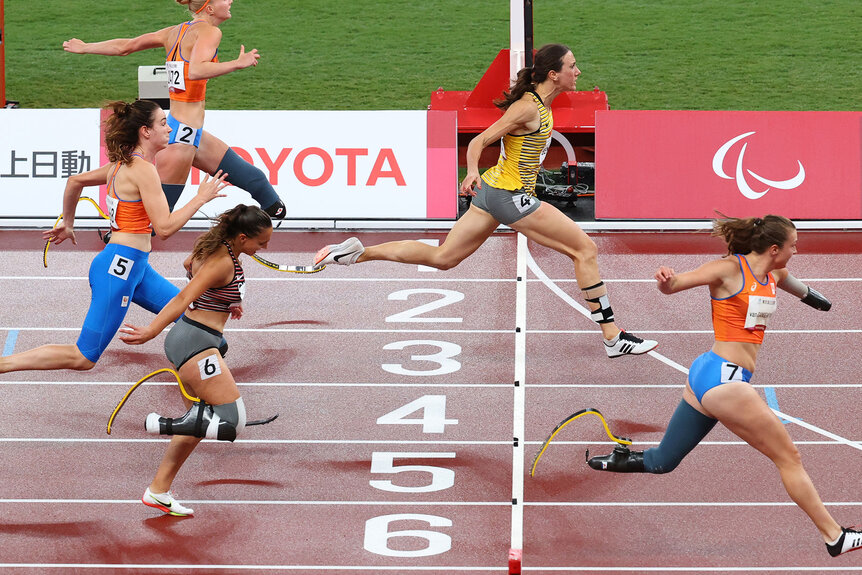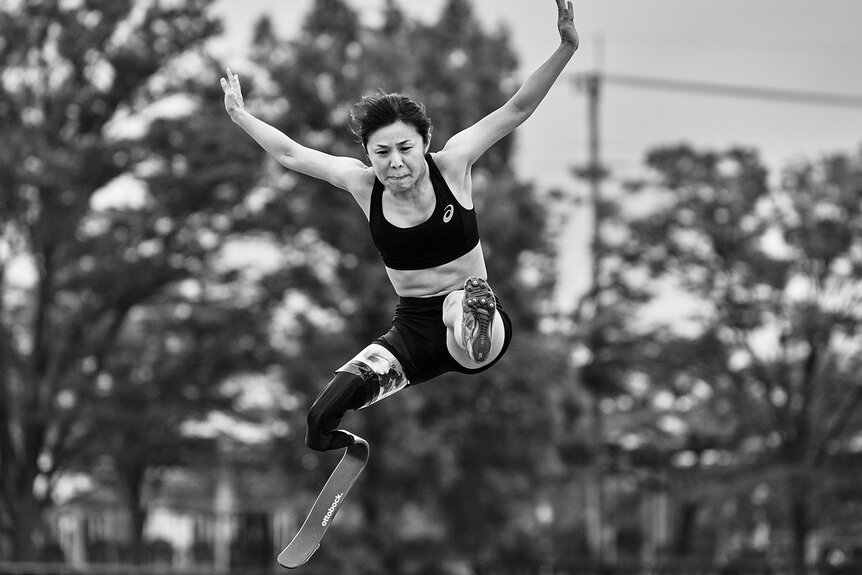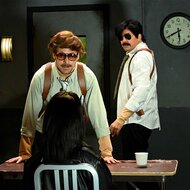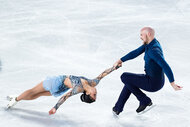The Science Behind Sport Prosthetics at the 2024 Paralympics
How engineers and athletes build better artificial limbs together.
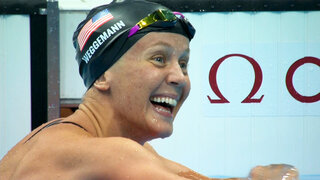
Prosthetic technologies go back thousands of years, at least to ancient Egypt where archaeologists have uncovered a prosthetic toe with incredible artistry and limited functionality. What began with devices made primarily of carved wood has evolved into a field of medicine which incorporates artificial intelligence, biomechanics, bionics, and cutting edge materials. And one need look no further than the 2024 Paris Paralympics to appreciate their significance.
While prosthetics have been around for millennia, it’s only in the last few decades that specialized devices for sporting activities have become readily available. Conventional prosthetics are designed for doing common activities like walking and jogging. They aren’t necessarily designed for performing at high speeds or absorbing high impacts. Sport prosthetics, by contrast, are specifically designed for dealing with the excess forces of high-performance sports to deliver the best possible capabilities to athletes.
How Modern Sport Prosthetics are Made
While many lower limb sport prosthetics are similarly structured, each is specialized not just for the intended activity but for the individual athlete. Each prosthesis takes into account an individual’s specific anatomy and biomechanics, to make sure the device and the body work well together to provide support, stability, and mobility to athletes.
Devices intended for sports like basketball or volleyball need to be able to handle rapid changes in direction, as opposed to a running limb, which primarily takes force from one direction. You might also notice that running limbs are curved and perpendicular to the direction of travel. That allows them to act like a spring, helping to propel runners. Meanwhile, a biking prosthesis is oriented to minimize wind resistance during races. Each prosthetic is individually designed for its specific use case.
Companies like Össur work one-on-one with athletes at their headquarters in Iceland to test and improve their devices in the lab before they ever hit the Paralympic stage. Running limbs like the Cheeta Xpanse, intended for long jumping, are engineered to achieve fast speeds during the run-up, improved pushing power for the all important jump, and better impact absorption during landing. It takes its name from the animal which inspired it. Because prosthetic limbs aren’t limited by the conventional shape of a human leg, they can be modeled after other systems of locomotion, like the legs of a cheetah which better store and release energy than our own.
Over the years, running blades have evolved from a simple C shape to include several additional bends which better distribute weight and redistribute force. They begin as thin sheets of carbon fiber fabric which are cut into thin strips, pressed together, laminated, and baked under pressure in proprietary molds. The process makes them strong and flexible, capable of withstanding heavy impacts, capturing some of the energy of impact, and releasing it like a spring to propel the runner forward at record-breaking speeds.
From there, the company uses biomechanical analysis including motion capture of Paralympians wearing and using the prostheses in the lab. That data is used to continually iterate and evolve, with an eye toward better comfort, support, stability, and performance. Biological evolution happens slowly, over the course of thousands of generations. The evolution of prosthetics is happening a whole lot faster.
